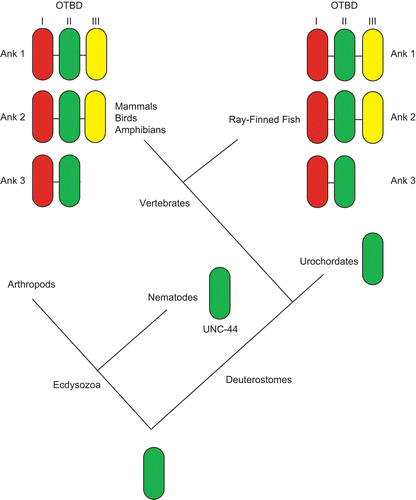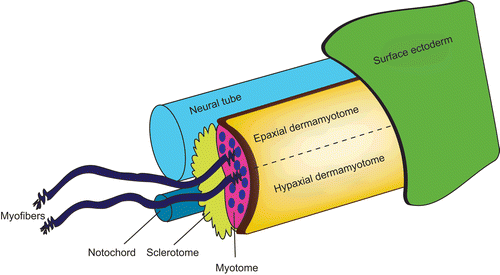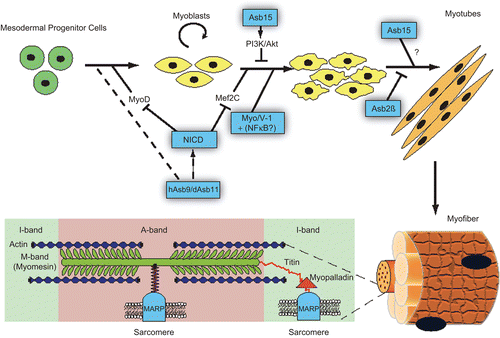Figures & data
Figure 1. Proposed model of evolutionary events leading to obscurin-titin binding domain (OTBD) in present-day ankyrins. In vertebrates, successive duplications led to three different modules, I, II and III. Ank1 and Ank2 have all three modules, while Ank3 has only modules I and II. Adapted from Hopitzan et al. (Citation2006). (permission has been obtained from Oxford University Press for the reproduction on this figure).

Table 1. Ankyrin repeat proteins expressed in skeletal muscle.
Figure 2. Caricature showing the structures in the skeletal muscle. In general, the main skeletal muscle anatomy consists of the dermomyotome, myotome and sclerotome, and is conserved throughout species. The dermomyotome is the source of the primary myotome, as well as contributing to the formation of the dermis, the endothelial and smooth muscle cells. The dermomyotome is divided into epaxial and hypaxial domains, which give rise to the epaxial muscle (deep muscle of the back) and hypaxial muscles (appendicular musculature, abdominal muscles, diaphragm, hypoglossal chords) respectively.

Figure 3. Summary of the ankyrin repeat proteins in muscle biology, from specification and differentiation of muscle precursors (hAsb9/dAsb11, NICD, Asb15, Myo/V-1+NFΚB?, Asb2β) to the structures of the muscle fibers (MARPs).
